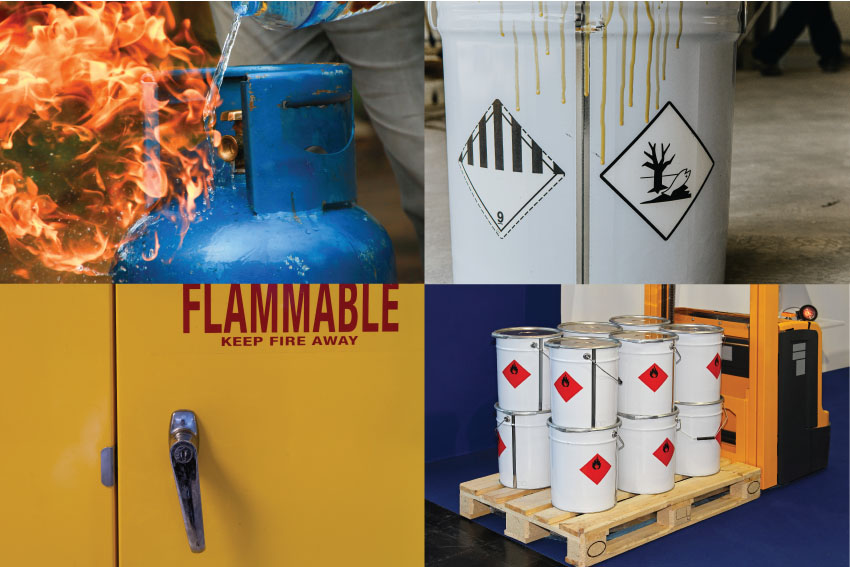
Knowing the difference between flammable and combustible substances is crucial for maintaining a safe workplace. While the terms are often used interchangeably, there are differences between them that require them to be handled and treated differently.
Here, we’ll explain what those differences are, helping you understand how to treat them.
The Difference Between Flammable and Combustible
First of all, what is the definition of flammable vs combustible? Put simply, ‘flammable’ refers to something that can easily catch fire when exposed to high temperatures. Some examples of flammable liquids are things like gasoline and aerosols.
While ‘combustible’ also refers to substances that catch fire, the temperature at which a combustible material ignites is much higher than a flammable one. Combustible materials are usually solid, like wood or cloth.
Flammable liquids and materials are more of a general fire risk because it takes less to set them off. However, in the right circumstances, combustible materials can be more dangerous. This is because they tend to burn faster and more aggressively, due to their high ignition temperature.
Flammable vs. Combustible Flash Point
Whether a material is flammable is determined by its flash point. This is the temperature at which something catches fire. If something has a flammable warning label, then the contained liquid or material has a flash point of 37.8°C or lower.
Something that is considered combustible, on the other hand, will usually have a flash point between 37.8°C and 93.3°C.
Storing Flammable vs. Combustible Liquids
Both flammable and combustible liquids and solids require safe storage, but flammable ones should be paid particularly close attention.
You should never have more than 25 gallons of flammable liquid stored outside of an approved cabinet. Flammable materials should, wherever possible, be contained inside fire-resistant safety cabinets.
They should never be stored in areas with high footfall, like stairways or corridors, or near any building exits, and the areas in which they are stored should be temperature controlled; it’s essential that the area is cool and dry, therefore not exposing the flammable substances to any open flames or ignition sources.
Handling Flammable and Combustible Materials
Flammable substances require more careful handling than others because of their volatility. Workers should, for example, always wear personal protective equipment when handling any substances that present a hazard.
A great degree of care should always be taken when handling flammable substance, as their low flash points means that they could set on fire just on a particularly hot day.
Combustible materials’ flash points are much higher, making them a lower risk day-to-day. While they may not require handling with the same degree of protection as flammable substances, care should still be taken.
Training Employees About Flammable and Combustible Substances
To minimise the dangers associated with flammable and combustible substances, your employees should be trained about the risks they might encounter at work. This should include training around what different hazard symbols and labels mean, so that they can identify risks at work.
They should also be trained on how to handle flammable and combustible materials, (as well as any other hazardous materials they may have to work with), including how and when to use each type of fire extinguisher.
Stay Safe with Label Source
At Label Source, we provide safety signs and labels to help you in any scenario, including fire safety. You can find everything you need when it comes to workplace signs and labels at Label Source. Just get in touch with one of our friendly team members to find out how we can help you and your business.